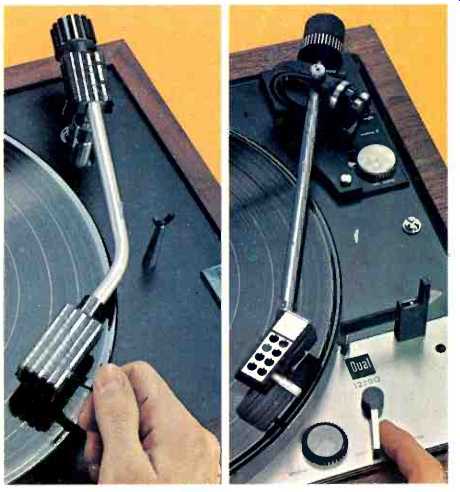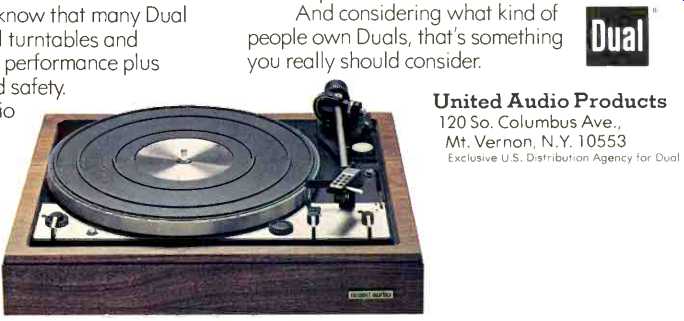Before you buy a manual turntable, consider what "manual" really means.
"Manual" means more than just "single play" Every time you play a record, you Must pick up the tonearm and move it to the record. And at the end of play, you must stop whatever you're doing, go to the turntable and return the tonearm to its resting post.
All by hand.
Not only is this inconvenient, it's also risky, because the business end of a tonearm is virtually weightless. Handling it without damage to the delicate stylus and your fragile records takes a very steady hand.

What about the automatic's extra moving parts?
An advantage often assumed for the manual turntable is simplicity: few moving parts. The automatic turntable does have additional parts, but they serve only to move the tonearm to and from the record when cycling. During play, a fully automatic Dual turntable has no more moving parts than a manual: motor, platter and drive system.
What's more, every manual turntable requires one additional moving part that no Dual ever requires: you.
Why many manual turntable owners switched to Dual.
From warranty cards, we know that many Dual owners formerly owned manual turntables and switched to enjoy Dual's quality performance plus fully-automatic convenience and safety.
For many years, more audio experts hifi editors, engineers and record reviewers--have owned Duals than any other make of quality turntable. So have the readers of the leading music/equipment magazines. Certainly no group is more concerned about record protection and the quality of music than these people.
Even the lowest priced Dual, model 1225, at $129.95 has more precision than you are ever likely to need. As for the highest priced Dual, the $400 electronic, direct-drive model 701, test reports have been extraordinary. Most independent test labs acknowledge that its rumble, wow and flutter are below the measuring capability of their test equipment.
A word for those who still think they want to play manually.
Despite all the above, you may still prefer to play your records manually. The Dual tonearm gives you this option, because it is as free-floating during play as any manual-only tonearm. Thus you can always place it on the record or lift it off--manually.
However, we predict that you will soon take full advantage of the convenience and security of Dual's full automation. Which is what most Dual owners prefer.
And considering what kind of people own Duals, that's something you really should consider.

The multi-play automatic Dual 1229Q, $259.95; Other multi-play automatics from $129.95. All less base and dust cover.
Single-play automatics are the Dual 601, $270; and the electronic direct-drive Dual 701, $400. Both include base and dust cover.
Dual United Audio Products 120 So. Columbus Ave., Mt. Vernon, N.Y. 10553 Exclusive U.S. Distribution Agency for Dual.
(Source: Audio magazine, Mar. 1975 )
Also see: Dual turntables (April 1974)
Dual turntables (Feb. 1978), Dual turntables (May 1975)
= = = =